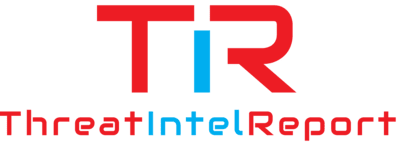In June 2024, Microsoft addressed a serious Denial of Service (DoS) vulnerability in Windows Hyper-V through the release of CVE-2024-31156. Hyper-V, a core virtualization technology widely used in enterprise environments, was found to be susceptible to an attack that could cause systems to crash or become unresponsive. This vulnerability is classified as Important, though its potential to disrupt critical operations makes it a high-priority fix for organizations relying on virtualized environments.
What is CVE-2024-31156?
CVE-2024-31156 is a Denial of Service (DoS) vulnerability that impacts Windows Hyper-V, Microsoft’s flagship virtualization platform. This flaw allows an attacker to crash a Hyper-V host by sending specially crafted network packets to the service. As a result, virtual machines (VMs) running on the affected Hyper-V environment could be abruptly terminated, leading to significant disruptions in business operations(
CyberSec UK)(
Exploitation Method
An attacker with network access to the Hyper-V environment can trigger the vulnerability remotely. By exploiting this flaw, the attacker can:
- Force the Hyper-V host to crash: This can result in a total shutdown of all virtual machines hosted on the affected server.
- Interrupt business continuity: Any organization relying on Hyper-V for critical services, such as web servers, databases, or internal applications, could face downtime and loss of service.
Unlike remote code execution vulnerabilities, this DoS vulnerability doesn’t allow the attacker to take full control of the system but instead disrupts its availability. This can be particularly harmful in environments where uptime is crucial, such as cloud services, data centers, and enterprises using virtualized infrastructure.
Is This Vulnerability Being Exploited in the Wild?
At the time of the June 2024 release, Microsoft had not confirmed any active exploitation of this vulnerability in the wild. However, the exploitability assessment indicates that systems could be targeted as soon as a proof-of-concept (PoC) is developed. Since Hyper-V is a key component in many enterprise and cloud-based environments, this vulnerability is expected to attract attention from cybercriminals looking to cause disruption or gain a foothold for further attacks(
CyberSec UK)(
As of now, no PoC has been publicly disclosed, but security experts anticipate that cybercriminals or researchers will likely reverse-engineer the patch to develop exploits. Historically, DoS vulnerabilities are popular among ransomware groups and cybercrime syndicates, who may use them to interrupt operations and force victims into negotiations.
Impact on Hyper-V Environments
If successfully exploited, CVE-2024-31156 could have severe consequences for organizations running multiple virtual machines on a single Hyper-V host:
- Service interruptions: The forced shutdown of VMs could lead to application outages, which is particularly harmful for businesses running critical services.
- Data loss: Any unsaved data or incomplete transactions could be lost if VMs are terminated without warning.
- Reputational damage: Organizations relying on cloud-hosted services or offering virtualized infrastructure to clients could suffer reputational harm if their systems go offline unexpectedly.
This makes it essential for IT teams to prioritize patching to prevent potential downtime and maintain business continuity.
Recommendations for Mitigating CVE-2024-31156
To mitigate the risk posed by CVE-2024-31156, organizations should take the following steps:
- Apply the June 2024 Patch Immediately: This is the most critical step to prevent exploitation. Microsoft has released patches for all supported versions of Windows Hyper-V, and administrators should ensure these updates are installed as soon as possible.
- Restrict Network Access to Hyper-V Hosts: Limiting network access to only trusted systems and ensuring proper firewall configurations can help reduce the likelihood of an attacker reaching the Hyper-V environment.
- Monitor for Unusual Activity: Organizations should implement continuous monitoring to detect any unusual traffic or behavior that may indicate an attempted DoS attack.
- Implement High Availability (HA) Configurations: For environments where uptime is critical, configuring High Availability (HA) clusters can mitigate the impact of a potential Hyper-V DoS attack by allowing workloads to be automatically shifted to unaffected hosts(CyberSec UK)(CyberSec UK).
Why Virtualization Vulnerabilities are High-Value Targets
Virtualized environments like Hyper-V are particularly attractive targets for attackers because they host multiple virtual machines on a single physical server. A successful attack against a Hyper-V host could result in the disruption of numerous critical services at once, amplifying the impact of a single vulnerability.
- Cloud providers: Many cloud services use virtualization technologies like Hyper-V to host customer data and applications. Any disruption to these services could lead to widespread outages.
- Enterprise environments: Businesses relying on Hyper-V to run internal systems—such as databases, customer relationship management (CRM) tools, and intranet services—could suffer operational downtime, potentially leading to financial losses.
Conclusion
The CVE-2024-31156 vulnerability in Windows Hyper-V highlights the critical nature of virtualization security. Though classified as a Denial of Service attack, the potential disruption it could cause to enterprise and cloud environments makes it a high-priority issue for system administrators. Applying the June 2024 Patch Tuesday updates and implementing strong network protections are essential steps to safeguard against potential attacks. As threat actors continuously evolve their tactics, ensuring that key infrastructure like Hyper-V is protected will remain a crucial task for organizations.
Further Reading
- Microsoft’s Security Update Guide: June 2024 Patch Tuesday
- Best Practices for Securing Virtualization Platforms
- Denial of Service Attacks and How to Prevent Them
